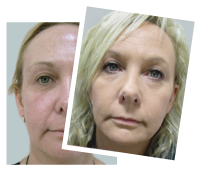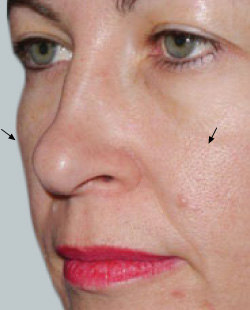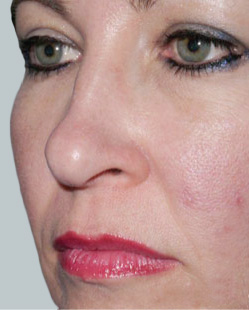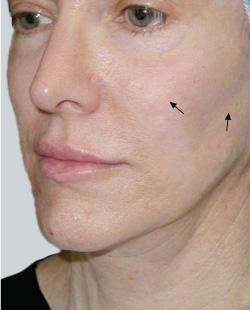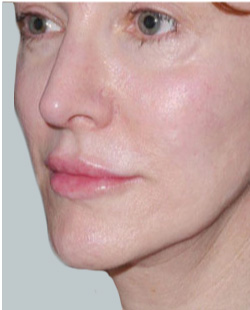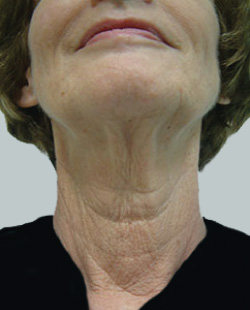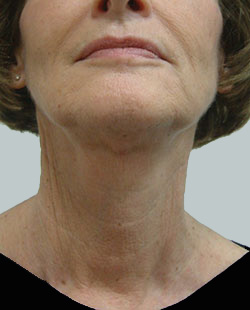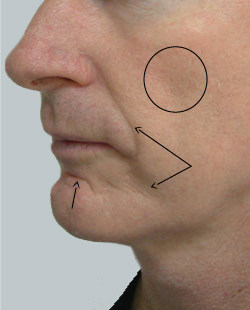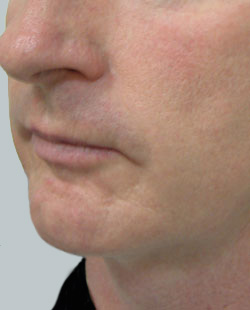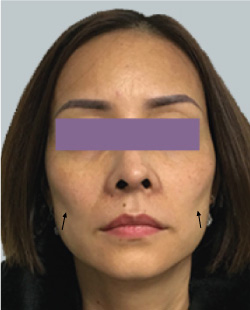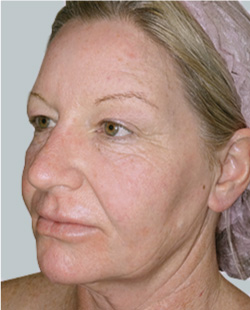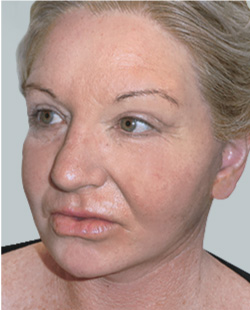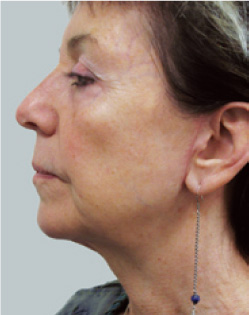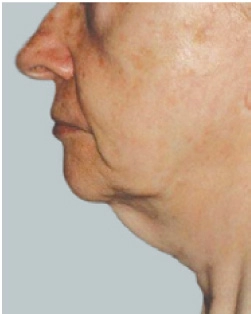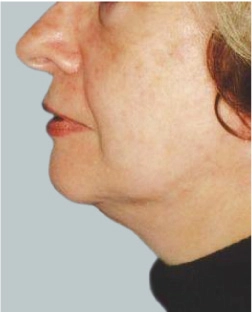A facelift (rhytidectomy) is a surgical procedure designed to reduce signs of ageing by lifting and tightening the skin and underlying facial structures.
Facelifts vary in technique, but all aim to create a smoother, firmer, and more natural-looking result by addressing skin laxity and facial contours.

How does a Facelift Work?
A facelift surgery involves lifting and repositioning the deeper layers of the face, removing excess skin and fat, and tightening muscles to create a more youthful look. This facial cosmetic surgery typically follows these steps:
- Incisions are made around the ears, hairline, and sometimes under the chin (depending on the type of facelift).
- The deeper facial tissues (SMAS layer) are lifted to restore volume and structure.
- Excess skin is removed, and the remaining skin is carefully repositioned for a natural result.
- Incisions are closed with sutures, and bandages are applied to aid healing.
Modern facelift techniques focus on lifting deeper facial structures rather than just pulling the skin, preventing an “overdone” look.
What a Facelift Can Achieve
- Reduce sagging skin in the midface, lower face, and jawline.
- Tighten and reposition facial muscles to enhance tone and give a more youthful appearance.
- Smooth deep wrinkles and folds, such as nasolabial folds and marionette lines.
- Define the jawline and reduce jowls for a more youthful look.
- Provide long-lasting results, often lasting 10+ years.

What a Facelift Cannot Do
- Remove fine lines or surface wrinkles (best treated with laser resurfacing or fillers).
- Stop the natural aging process — it sets back aging but does not halt it.
- Replace volume loss entirely—fat grafting or fillers may be needed for complete rejuvenation.
- Address forehead wrinkles or droopy brows—these may require a brow lift.
Benefits of a Facelift
A facelift is one of the most effective procedures for reversing visible signs of aging, providing long-lasting improvements to facial contours. Unlike non-surgical treatments, which offer temporary results, a facelift can restore a more youthful, defined appearance for years.
Facelift surgeries effectively address various aging concerns, offering personalised operation plans and detailed estimates for different aspects of the surgery.
Facelift benefits also include a customisable approach that achieves tailored results based on your aging concerns and minimal visible scarring, as incisions are placed discreetly along the hairline and ears.

Long-Lasting Results vs Non-Surgical Options
While other non-surgical volume treatments can enhance facial volume and smooth fine lines, their effects fade over time, requiring maintenance treatments every few months or years. A facelift, on the other hand:
- Provides long-term results, often lasting 10+ years with proper care.
- Lifts and tightens deep facial tissues, which non-surgical options cannot achieve.
- Reduces the need for ongoing filler treatments, saving money in the long run.
- Offers more dramatic yet natural-looking improvements compared to temporary solutions.
Non-surgical options can complement a facelift by addressing fine lines, skin texture, or volume loss, but they cannot replace the structural lifting achieved through surgery.
How a Facelift Improves Sagging Skin and Facial Aging
A facelift corrects age-related changes that cannot be improved with skincare or injectables alone. This includes:
- Tightening sagging skin on the cheeks, jawline, and neck, creating a firmer appearance.
- Smoothing deep folds and wrinkles, such as nasolabial folds and marionette lines.
- Restoring youthful facial contours by repositioning deeper tissues.
- Reducing jowls and redefining the jawline, eliminating the “sagging” effect.
- Enhancing natural beauty while maintaining a balanced and refreshed appearance.
Many patients combine a facelift with eyelid surgery (blepharoplasty) or fat transfer to create a fully rejuvenated look without looking “overdone.”
Am I a Good Candidate for a Facelift?
A facelift is ideal for individuals experiencing moderate to severe facial aging who want long-lasting, natural results. The best candidates are those who:
- Are typically in their 40s to 70s, though suitability depends on skin quality rather than age alone.
- Have sagging skin, deep wrinkles, or jowls that non-surgical treatments can no longer correct.
- Have good skin elasticity, allowing for a smooth, natural lift.
- Are in good overall health, with no serious medical conditions that could impact healing.
- Are non-smokers or willing to quit before and after surgery, as smoking affects healing and results.
- Have realistic expectations, understanding that a facelift restores a more youthful version of yourself rather than creating an entirely new look.

If you are unsure whether you need a facelift or a different treatment, a consultation with a qualified surgeon can determine the best approach for your concerns.
Facelift vs Other Treatment Options
While a facelift is the gold standard for reversing facial aging, some individuals may benefit from non-surgical alternatives such as face thread lifts or volumising treatments depending on their goals.
A facelift focuses on lifting and repositioning sagging skin and deep tissues, creating a firmer, more sculpted look. Non-surgical options can address mild signs of aging, providing temporary improvements but not lifting deeper facial structures.
Volumising treatments help restore lost facial volume but cannot correct sagging skin or redefine the jawline. Depending on individual needs, combining surgical and non-surgical approaches may provide the best results.
A facelift is best for those seeking long-term results, and more moderate to severe surgical intervention is needed. Non-surgical treatments or other alternatives may suit those seeking subtle, temporary enhancements.
Facelift Procedure – What to Expect
Facelift surgery is a customised procedure designed to restore a youthful, natural appearance by lifting and repositioning sagging facial tissues. Understanding the process can help patients feel more confident and prepared before undergoing surgery.

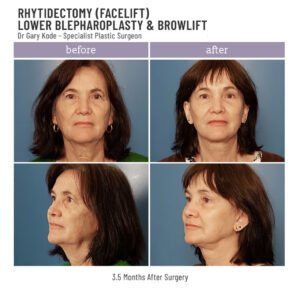
Consultation & Pre-Surgical Planning
Before surgery, patients will have a one-on-one consultation with a plastic surgeon to assess their concerns and create a personalised treatment plan. It is crucial to consult a qualified professional in plastic surgery to ensure the best care and outcomes.
During this consultation, the surgeon will:
- Evaluate your facial structure and skin elasticity to determine the best facelift technique.
- Discuss your medical history to ensure you’re a safe candidate for surgery.
- Explain the expected results based on your facial aging and desired outcome.
- Review alternative or complementary procedures that may enhance results, such as eyelid surgery or fat transfer.
- Provide pre-operative instructions, including when to stop certain medications, avoid alcohol, and quit smoking if necessary.
A well-planned facelift ensures natural-looking results that complement your unique facial features.
Step-by-Step Surgical Process
A facelift typically follows these steps:
- Marking the Incision Sites:
The surgeon marks the incision areas, typically along the hairline, around the ears, and sometimes under the chin, to ensure minimal visible scarring. Proper care and management of the incision site(s) are crucial for optimal healing. This includes following specific post-operative instructions from the surgeon, such as using bandages and drainage tubes. - Administering Anaesthesia:
Either local anaesthesia with sedation or general anaesthesia is used to ensure comfort. - Lifting & Repositioning Facial Tissues:
The surgeon carefully lifts and tightens the underlying muscle layer (SMAS) for a natural, long-lasting result. Excess skin is removed to eliminate sagging, and facial fat and tissue are repositioned for smoother contours. - Closing the Incisions:
The skin is carefully redraped, and the incisions are sutured or closed with surgical glue, ensuring a seamless finish. - Applying Dressings & Bandages:
The face is wrapped with bandages to reduce swelling and support healing.
Anaesthesia Options & Surgery Time
- Local Anaesthesia with Sedation – Used for less invasive facelifts, allowing patients to remain awake but relaxed.
- General Anaesthesia – Used for full facelifts or more extensive procedures, ensuring the patient is completely asleep.
Surgery Time:
- Facelift: 1.5 to 3 hours
- SMAS or Deep Plane Facelift: 3 to 6 hours
- Facelift Combined with Other Procedures (e.g., Neck Lift, Eyelid Surgery): Up to 7+ hours
The type of facelift and additional procedures will determine the total surgery time. Your surgeon will discuss what’s best for you.
Types of Facelifts
At Me Clinic, we offer a range of facelift options tailored to different concerns and stages of facial aging. Each technique is designed to provide natural-looking results while addressing specific areas of the face.
Below is an overview of the facelift types we offer and who they are best suited for.

Lower Facelift
A lower facelift lifts and tightens the lower third of the face, including the jawline, jowls, and corners of the mouth. It is ideal for reducing sagging skin and deep wrinkles while maintaining a natural look.
This procedure is best for individuals experiencing loose skin, jowls, and loss of jawline definition but who do not need complete facial rejuvenation. It is popular among patients in their 40s to 60s who want to restore youthful contours without altering the upper face.
Lower Facelift Benefits:
- Reduces sagging around the jawline and chin
- Softens marionette lines and lower face wrinkles
- Improves jawline definition for a more sculpted look
- Creates long-lasting, natural results
Upper Facelift
An upper facelift, often combined with a brow lift, targets the forehead and upper face to reduce wrinkles, elevate the brows, and create a more youthful expression. It smooths deep forehead lines and drooping brows while lifting the upper face.
This facelift is ideal for patients with heavy brows, deep forehead wrinkles, or sagging upper facial skin. It is commonly chosen by individuals in their 40s to 70s looking to refresh the upper portion of their face.
Upper Facelift Benefits:
- Lifts drooping brows and restores a youthful arch
- Smooths deep forehead wrinkles and frown lines
- Opens up the eyes for a more refreshed appearance
- Provides a natural, balanced look when combined with other procedures
Mid Facelift
A mid facelift focuses on lifting the cheeks and reducing sagging in the midface, particularly around the nasolabial folds (smile lines) and under-eye hollows. It restores volume and contour to the cheek area for a youthful look.
This facelift is best for individuals with flattened cheeks, deep nasolabial folds, and sagging in the midface but without significant jowling or neck laxity. It is commonly performed on patients in their 30s to 50s who want to restore cheek fullness.
Mid Facelift Benefits:
- Lifts sagging cheeks for a fuller, more youthful look
- Softens deep smile lines (nasolabial folds)
- Improves under-eye hollows and restores facial balance
- Provides a refreshed look without altering the lower face
SMAS Facelift
A SMAS facelift lifts both the skin and the underlying SMAS (Superficial Musculoaponeurotic System) layer, which provides longer-lasting, more natural results than a skin-only facelift. This method addresses both volume loss and sagging skin for comprehensive facial rejuvenation.
This procedure is ideal for patients in their 40s to 70s with moderate to severe facial aging, including deep wrinkles, sagging skin, and loss of facial volume. It is suited for those who want a more significant and longer-lasting lift.
SMAS Facelift Benefits:
- Lifts both the skin and deeper facial structures
- Redefines the jawline and reduces jowls
- Smooths deep wrinkles and folds
- Provides longer-lasting results compared to traditional facelifts
Deep Plane Facelift
A deep plane facelift is the most advanced and comprehensive facelift technique. It lifts the deep facial structures (SMAS and ligaments) rather than just tightening the skin, allowing for dramatic yet natural-looking results without a pulled or artificial appearance.
This facelift is best for patients with significant sagging, deep wrinkles, and loss of facial volume who want a long-lasting, natural outcome. It is commonly performed on individuals in their 50s to 70s who need a more intensive lift.
Benefits:
- Provides the most natural and long-lasting results
- Lifts deep facial tissues for a more youthful structure
- Reduces jowls, deep folds, and sagging across the entire face
- Avoids the tight, pulled look of older facelift techniques
Choosing the Right Facelift for You
Each facelift technique addresses different areas of facial aging, and the best option depends on your unique concerns, age, and goals. During a consultation, your surgeon will assess your facial structure, skin elasticity, and aging patterns to recommend the most effective approach for you.
Typically, most patients benefit from a full facelift. It is standard to have a facelift that targets the whole face, and also accompanied by a neck lift or brow lift.

It is usual for patients not to know what facelift is right for them. That is where a consultation with our expert plastic surgeons at Me Clinic can help you determine the best treatment for your needs!
Recovery & Aftercare for Facelift Surgery
A facelift requires a structured recovery period to allow for optimal healing and long-lasting results. While most patients experience swelling and bruising in the first few weeks, proper aftercare ensures a smooth recovery and the best possible outcome.
All invasive surgery, including facelifts, carries inherent risks and necessitates a thoughtful recovery period and care regimen. Proper aftercare during the healing process is crucial to mitigate these risks and ensure successful results.
Facelift Recovery Timeline of Healing & Swelling
Days 1-7
Swelling and bruising peak, and mild discomfort is managed by pain relief. After a few days, bandages may be removed.
Weeks 2-4
Swelling subsides significantly, and most patients feel comfortable returning to work and social activities.
Month 1-3
Residual swelling continues to decrease, and scars begin to fade.
Month 3-6
Final results take shape as the skin settles, revealing a smoother, firmer appearance.
Beyond 6 Months
Incisions are fully healed, and results appear natural and refined.
Each patient heals at a different pace, but most see noticeable improvements within the first month.
How to Care for Your Face After Surgery
- Keep your head elevated (even while sleeping) to reduce swelling.
- Avoid heavy lifting, bending over, and strenuous activities for at least 2-3 weeks.
- Use cold compresses carefully in the first few days to help manage swelling.
- Follow your surgeon’s instructions for cleaning incisions and changing dressings.
- Do not smoke or drink alcohol, as they slow healing and can affect results.
- Minimise sun exposure, and always wear SPF to protect healing skin.
- Avoid excessive facial movements (such as laughing, chewing hard foods, or exaggerated expressions) in the first few weeks.
Strictly following post-op care can help prevent complications and ensure optimal results.
When to Expect Final Results
You will start seeing noticeable facelift results around 4-6 weeks as swelling and bruising go down, revealing a smoother, tighter look. Over the next 3-6 months, your face will continue to settle as any leftover swelling fades. Scars may look pink initially, but they will gradually fade over several months and blend in with your skin.

Final results appear around 6-12 months, once everything has fully healed and your face adjusts to its refreshed, youthful shape. Patience is key—your facelift results will continue to improve over time as your face adjusts to its new, youthful contours.
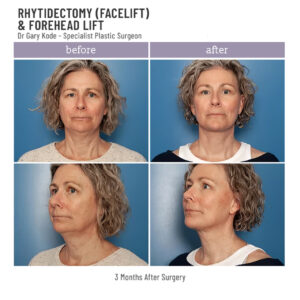
How Long Do Facelift Results Last?
A facelift provides long-lasting rejuvenation, with results typically lasting 7 to 15 years, depending on individual factors and the type of facelift surgery. While a facelift cannot stop aging, it sets back the clock significantly, allowing patients to enjoy a fresher, more youthful appearance for years.
Longevity of Results
- The deep structural lifting of a facelift makes it far more durable than non-surgical treatments.
- While some natural aging continues, patients will always look younger than if they hadn’t had surgery.
- A facelift may last 5-10 years, whereas a deep plane facelift can last 10-15 years.
- Many patients maintain results with skin treatments, injectables, or minor touch-ups over time.
Factors That Impact Facelift Results
Several factors determine how long your facelift results will last, including:
- Surgical Technique – A deeper tissue lift (e.g., SMAS or deep plane facelift) last longer than a skin-only facelift.
- Genetics & Skin Quality – Strong collagen levels contribute to longer-lasting results.
- Lifestyle Habits – Smoking, excessive sun exposure, and poor skincare can accelerate aging.
- Weight Fluctuations – Significant weight loss or gain can affect facial structure over time.
- Post-Op Maintenance – Regular skincare, healthy diet, and non-surgical treatments can prolong facelift benefits.
A facelift provides lasting improvements, but maintaining a healthy lifestyle will help extend its contouring effects.
Before 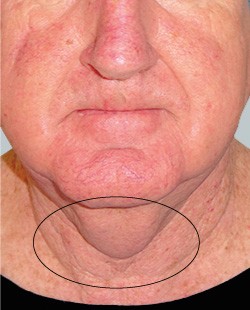
After 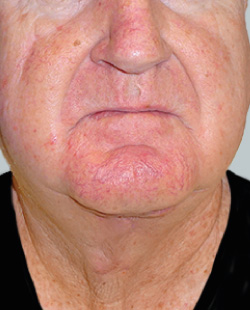
Performed By: Dr Ashley Granot (M0001026218) MBBS, FFMACCS (Med), FACP, FACNEM, ABBRM, MA5M Cosmetic Doctor, Melbourne
Facelift Costs
The costs of facelift surgery varies from patient-to-patient. A starting price for a facelift is $20,000. A more accurate and specific cost-breakdown for your tailored facelift will be provided after your consultation with one of Me Clinic’s specialist plastic surgeon.
Neck Lift and Other Procedures Commonly Combined with a Facelift
A facelift focuses on lifting and tightening sagging skin, but for a comprehensive facial rejuvenation, many patients combine their facelift with additional procedures to enhance their results.
A facelift focuses on lifting and tightening sagging skin, but for a comprehensive facial rejuvenation, many patients combine their facelift with additional procedures to enhance their results.
Your surgeon will assess your facial features and recommend the best combination of procedures to achieve your desired results.
Why Choose Me Clinic for your Facelift Surgery?
At Me Clinic, we combine surgical expertise with a patient-first approach to deliver outstanding results for face lift surgery. Here’s why patients choose us:
- Our specialist plastic surgeons have extensive experience in facelifts.
- We offer a customised treatment plan tailored to your specific anatomy and goals.
- Our clinic prioritises safety, comfort, and natural-looking results.
- We provide comprehensive post-surgery support to ensure a smooth recovery and long-lasting outcomes.
Book a Consultation with a Me Clinic Specialist Plastic Surgeon
There is a lot to consider with a facelift, that is why Me Clinic take the confusion out of surgery. Booking a consultation at Me Clinic gives you access to experienced plastic surgeons who understand the importance of precision and patient care.
During your consultation, you can learn more about the procedure, talk about your specific concerns, and get a tailored approach that fits your needs and recovery timeline.
Get in contact with Me Clinic today to book a consultation and assessment via our contact form.
Or alternatively, you can contact Me Clinic in the following ways:
Our Specialist Plastic Surgeons who perform Facelift Procedures in Melbourne
Dr Gary Kode
Specialist Plastic Surgeon (MED0001405964)
30+ years experience
25,000+ procedures
-Dr Gary Kode is a highly experienced Specialist Plastic Surgeon with over 33 years in Aesthetic and Reconstructive Surgery, having performed approximately 25,000 procedures. A Fellow of the Royal Australasian College of Surgeons (FRACS), he is renowned for his expertise in facelift surgery and breast augmentation, delivering natural and refined results.
Read moreDr Amir Tadros
Specialist Plastic Surgeon (MED0001375519)
18 years experience
10,000+ surgeries
+Mr. Amir Tadros is a triple board-certified Specialist Plastic Surgeon with over 25 years of experience, performing thousands of cosmetic and reconstructive surgeries in Australia, the UK, and internationally. His extensive training in world-renowned plastic surgery units and expertise in complex cases ensure patients receive the highest level of surgical precision and care.
Read moreDr David Ross
Specialist Plastic Surgeon (MED0001124797)
27 years experience
15,000+ surgeries
+Dr David Ross is a Specialist Plastic Surgeon with over 27 years of experience in plastic surgery and cosmetic procedures. Dr Ross also has public hospital appointments in supervisor roles, overseeing the training of 25 Specialist Plastic Surgeons during that time. Dr David Ross has published many articles on reconstructive and cosmetic plastic surgery while educating general practitioners.
Read more
Further reading of facelift surgery
Surgical Warning: Any surgical or invasive procedure carries risks. Before proceeding you should seek a second opinion from an appropriately qualified health practitioner.
Read more on the Risks of Surgery
How long does a facelift last?
A facelift typically lasts 7-15 years, depending on the type of facelift, skin quality, and lifestyle factors like sun exposure and smoking.
What is the best age to get a facelift?
Most facelift patients are between 40-70 years old, but suitability depends on skin elasticity and the severity of aging signs, not just age.
How painful is facelift recovery?
Mild to moderate discomfort is expected in the first week, but pain is manageable with prescribed medication. Most patients describe it as tightness rather than severe pain.
Will my facelift results look natural?
Yes — modern facelift techniques lift deeper tissues rather than just tightening the skin, ensuring a natural, youthful look without appearing overdone.
How long does swelling last after a facelift?
Swelling peaks in the first week and subsides significantly within 2-4 weeks. Residual swelling may last 3-6 months, with final results visible around 6-12 months.
Will I have visible scars after a facelift?
Facelift incisions are strategically placed along the hairline and behind the ears, making scars discreet and barely noticeable once healed.
Can a facelift fix sagging neck skin?
A facelift mainly targets the mid-to-lower face, but a neck lift can be combined to tighten sagging skin and enhance jawline definition.
What’s the difference between a mini facelift and a full facelift?
- Mini Facelift – Less invasive, targets mild sagging, and has a quicker recovery.
- Full Facelift – Corrects moderate to severe aging, lifting deeper tissues for long-lasting results.
How soon can I return to work after a facelift?
Most patients return to desk jobs within 10-14 days, but strenuous activities should be avoided for 3-4 weeks to allow proper healing.
Can I combine a facelift with other treatments?
Yes! Many patients combine a facelift with a neck lift, eyelid surgery, or fat transfer for a more comprehensive rejuvenation.
Medical references for a facelift
- Mayo Clinic: Face-lift
{Visit} - Rohrich, R. J., Sinno, S., & Vaca, E. E. (2019). Getting Better Results in Facelifting. Plastic and reconstructive surgery. Global open, 7(6), e2270.
{Visit} - Ahmed M Hashem, Rafael A Couto, Chris Surek, Marco Swanson, James E Zins, Facelift Part II: Surgical Techniques and Complications, Aesthetic Surgery Journal, Volume 41, Issue 10, October 2021, Pages NP1276–NP1294.
{Visit} - Recovery After Facelift Surgery: An In-Depth Overview and Timeline. Dr Mark Kohout. {Visit}
















